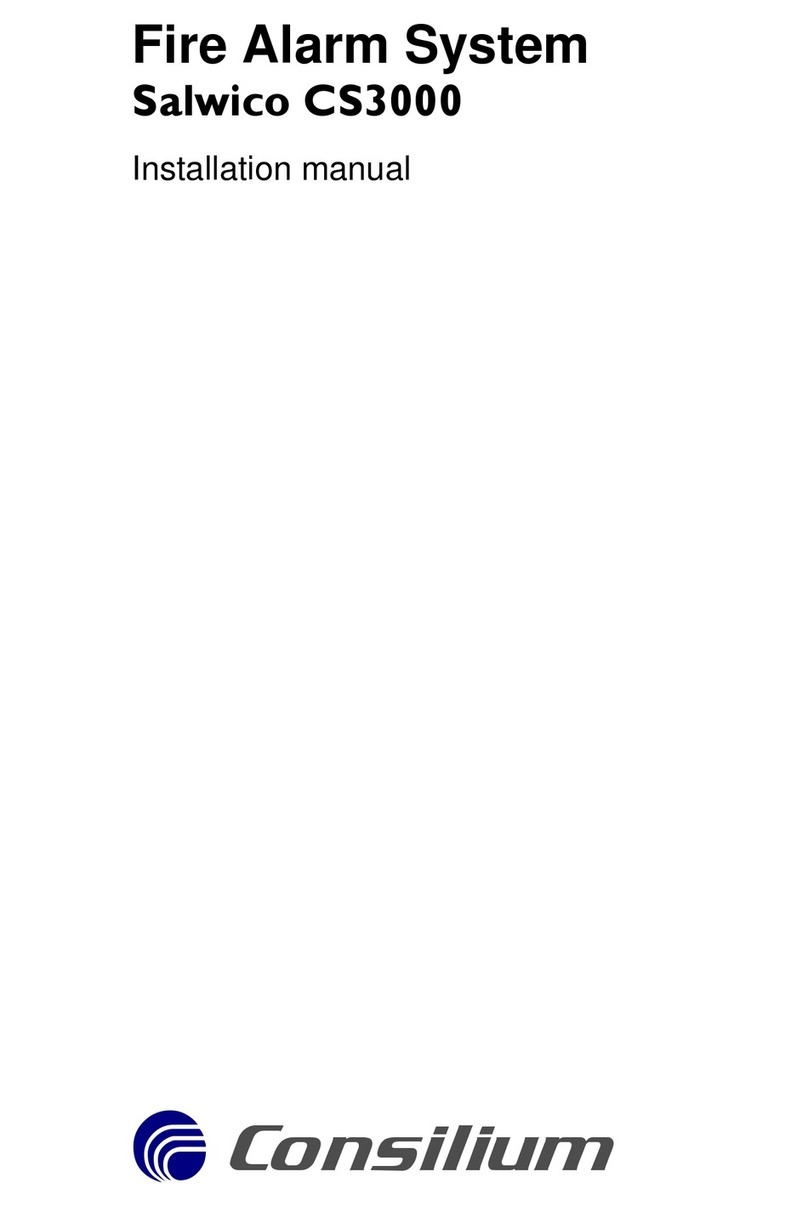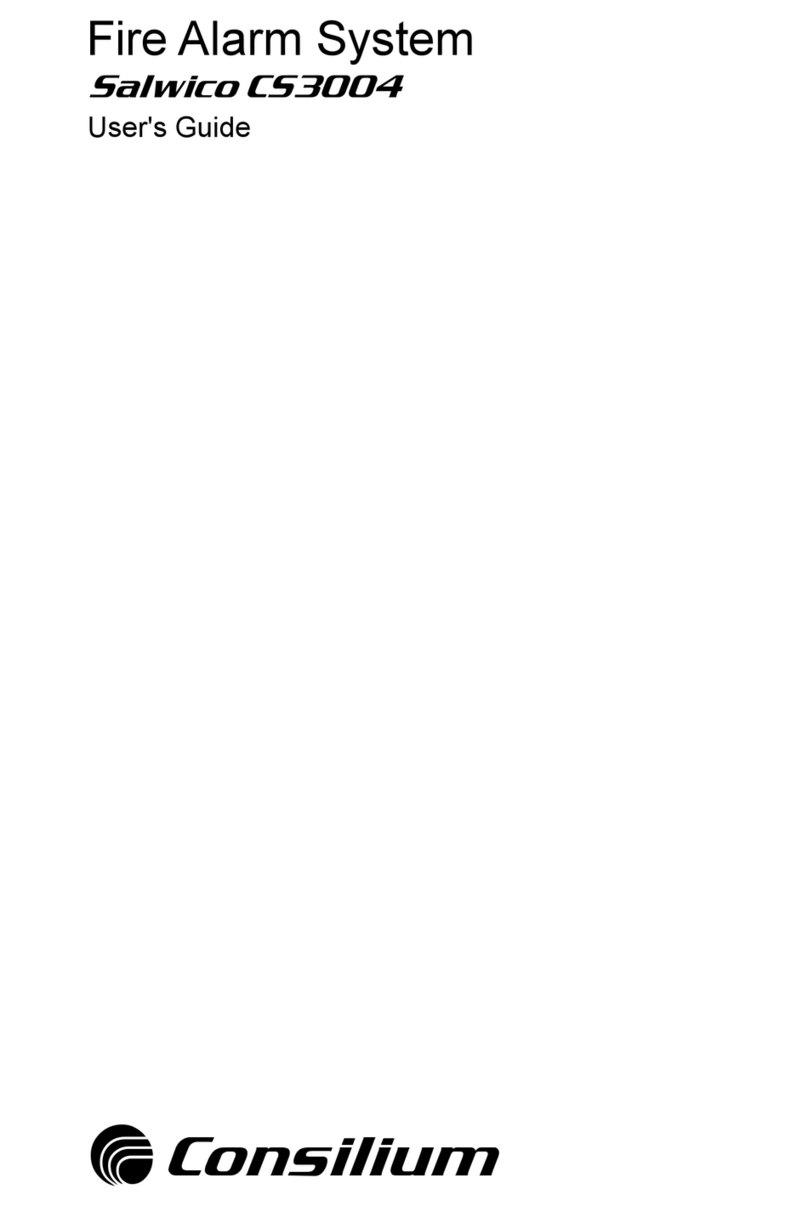
Installation Manual About this manual
Salwico CS4000
1
Contents
ABOUT THIS MANUAL.............................................................................................................2
CHAPTER 1: GENERAL DESCRIPTION ...............................................................................3
CS4000 BLOCK DIAGRAM ............................................................................................................ 3
CHAPTER 2: INSTALLATION .................................................................................................4
MECHANICAL INSTALLATION ....................................................................................................... 4
Central units............................................................................................................................4
Loop units................................................................................................................................4
ELECTRICAL INSTALLATION ......................................................................................................... 5
Cable requirements.................................................................................................................5
Loop lengths............................................................................................................................5
Detector loops.........................................................................................................................7
EN54-2 requirements for detector loops.................................................................................8
Connection to LB3 loop board................................................................................................9
Connection to ZB, zone board...............................................................................................10
Test the cable.........................................................................................................................11
Setting alarm levels for conventional zones..........................................................................13
Setting the address on loop units...........................................................................................14
Electrical installation, Central equipment............................................................................16
CHAPTER 3: VERIFICATION................................................................................................17
LOOPS ........................................................................................................................................ 17
Testing...................................................................................................................................18
TROUBLE SHOOTING................................................................................................................... 20
The system will not power up................................................................................................20
Polarity fault .........................................................................................................................20
Wrong number of loop units (only for addressable loops on LB).........................................21
Cable break...........................................................................................................................22
Earth fault .............................................................................................................................23
Short circuit...........................................................................................................................23
Mute faults.............................................................................................................................23
Reset faults ............................................................................................................................23
CHAPTER 4: COMMISSIONING REQUIREMENTS .........................................................24
CHAPTER 5: GUIDELINES FOR FIRE ALARM INSTALLATIONS...............................27
APPENDIX A: ADDRESS LIST / TEST REPORT................................................................31
APPENDIX B: ID LIST..............................................................................................................34
APPENDIX C: FAULT CODES & FUSES..............................................................................36
APPENDIX D: CONNECTIONS FOR LOOP UNITS...........................................................40
APPENDIX E: CENTRAL UNIT TERMINAL & CABLING LAYOUT.............................43
APPENDIX F: USCG INSTALLATION AND OPERATION...............................................44































